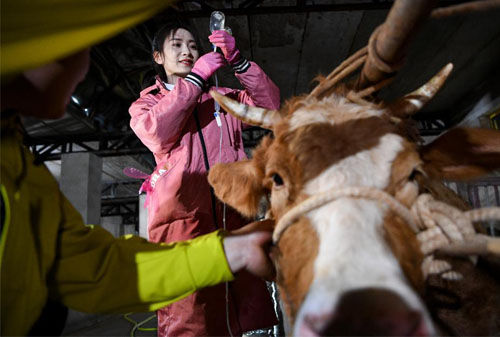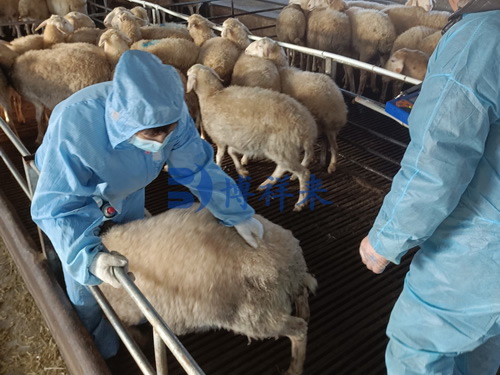Understanding POC in Veterinary Medicine
In modern veterinary medicine, especially in livestock and farm animal management, efficient diagnosis and timely treatment are critical. One term that is increasingly used in this field is "POC"—an abbreviation for "Point-of-Care." While this term originates from human healthcare, its role in veterinary practice is growing rapidly, especially with the widespread adoption of portable technologies such as ultrasound, rapid testing kits, and field-ready diagnostic tools.
What Does Point-of-Care Mean in Veterinary Settings?
Point-of-Care (POC) refers to medical or diagnostic care delivered directly at the location where the animal is housed or being treated, rather than in a distant lab or clinic. In other words, the diagnostic and treatment process occurs right at the “point” of animal care—on the farm, in the barn, or in the pasture. This approach reduces the delay between testing and treatment, improves animal welfare, and enhances clinical outcomes for livestock.
POC applications include rapid blood tests, portable imaging like veterinary ultrasound, and even basic surgeries or wound care done in the field. These technologies are especially useful for large animals such as cattle, sheep, goats, and pigs, where moving them to a clinic is impractical or stressful.

Why Is POC Important for Livestock Operations?
In large-scale animal farming, time is of the essence. Diseases can spread quickly, and delays in diagnosis or treatment can lead to significant economic losses. POC tools allow veterinarians and farm managers to:
Identify illnesses such as mastitis, pneumonia, and reproductive issues immediately.
Perform rapid pregnancy checks using portable ultrasound.
Monitor herd health in real time.
Make treatment decisions during the same visit, reducing labor and transportation costs.
For example, a point-of-care ultrasound can help detect a retained placenta in a cow or confirm uterine involution post-calving without waiting for an off-site consultation. This real-time feedback loop helps prevent complications that could affect both productivity and animal welfare.
POC and Early Disease Detection
Early detection is a cornerstone of effective herd management. POC diagnostics, especially when paired with routine monitoring, enable early identification of abnormalities such as changes in vital signs, metabolic imbalances, or localized infections. This allows for prompt intervention and can dramatically reduce the need for antibiotics and other pharmaceuticals—a benefit both for animal health and consumer confidence.

Technologies That Support Veterinary POC
Several technologies now empower veterinarians to perform high-quality diagnostics in the field:
Portable Ultrasound Machines:
These devices have become essential in bovine reproduction, detecting pregnancy as early as 28 days post-insemination. They are also used for tendon injuries in equines, abdominal assessments, and guiding fine-needle aspirates.Blood Chemistry Analyzers:
Compact devices like the VetScan or i-STAT enable measurement of electrolytes, liver enzymes, and blood gases instantly.Rapid Test Kits:
These include ELISA or lateral flow assays for detecting diseases like BVDV (Bovine Viral Diarrhea Virus), Johne’s disease, or even brucellosis—all without leaving the farm.Mobile Apps and Cloud-Based Recordkeeping:
These allow seamless documentation of diagnostic data, health records, and treatment plans while synchronizing with farm management software.
Limitations and Challenges
While POC has enormous potential, it is not without its challenges:
Environmental factors like weather and hygiene in barnyards can affect diagnostic accuracy.
Operator expertise matters: a handheld ultrasound is only as good as the veterinarian interpreting the image.
Cost can be a barrier for small-scale farms, although prices are gradually becoming more accessible.
Nevertheless, the benefits of timely intervention, reduced labor costs, and improved herd outcomes generally outweigh these limitations.
The Role of Training in POC Success
Training veterinarians and farm personnel to use POC tools effectively is critical. Proper usage ensures that results are reliable and actionable. Many veterinary schools and continuing education programs now offer modules on point-of-care technology. This is especially important in rural areas where veterinary access may be limited.
Conclusion: POC Is Reshaping Veterinary Livestock Care
The growing adoption of POC tools in veterinary medicine is a game-changer for livestock management. It enables faster, more accurate decision-making, improves animal welfare, and helps farms maintain productivity with minimal disruption. As technology becomes more affordable and integrated with mobile platforms, POC will continue to be a cornerstone of modern animal husbandry.
Whether it’s a portable ultrasound to check pregnancy in cows or a rapid blood test for early detection of disease in sheep, point-of-care is not just a trend—it’s the future of veterinary care.
References:
"Point-of-Care Diagnostics in Veterinary Medicine," Frontiers in Veterinary Science, https://www.frontiersin.org/articles/10.3389/fvets.2021.663844/full
"The Role of Point-of-Care Testing in Animal Health," International Journal of Veterinary Science and Medicine, https://www.sciencedirect.com/science/article/pii/S231445992030101X
"Portable Ultrasound in Bovine Practice," Veterinary Practice News, https://www.veterinarypracticenews.com/portable-ultrasound-in-bovine-practice/
"Veterinary Point-of-Care Ultrasound (POCUS): A Review," VetRecord, https://bvajournals.onlinelibrary.wiley.com/doi/10.1002/vetr.42
tags:
Text link:https://www.bxlultrasound.com/ns/798.html


